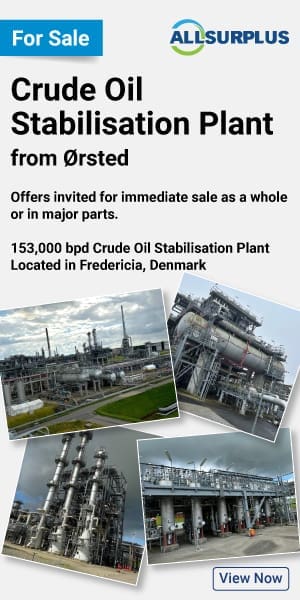Ellen Warren: Tell us a little bit about your current position and what you do, as well as how you found a job.
Swati Kalra: I am a Product Analyst, Digital Openness for a global oilfield services company, but I am also, by education, a petroleum geologist and petro-technical engineer, which gives me a unique ability to lead and collaborate with cross-functional teams requiring oil and gas (O&G) domain as well as digital technology expertise. I have a Master of Science and Technology degree in Applied Geology from IIT, the Indian School of Mines, and a credential in Product Management from the University of California-Berkeley Executive Education program. I am also a proud member of the American Association of Petroleum Geologists and the Society of Petroleum Engineers. My current role includes responsibility for product management, technical product sales, data management, market research, and developing strategic initiatives that align with our corporate business goals and the needs of our enterprise customers worldwide.
I embarked on my professional journey during my university years when my current employer visited my campus in 2014 to recruit interns. After successfully navigating the competitive selection process, I was hired for an internship. Originally, I was expected to join as a Geologist, but due to a last-minute shift, I was moved to the technology division. This role required leveraging my domain knowledge to contribute to the development of software solutions and services for the O&G sector.
The transition was challenging, as I had to rapidly build technical skills in parallel with my existing domain expertise. However, through persistence and continuous learning, I gradually excelled, ultimately leading a customer-facing project that significantly contributed to the company’s success. My performance during the internship was recognized, and I was offered a full-time position in the same company. Since then, I’ve held several roles that not only demand technical and domain-specific knowledge but also strategic thinking and leadership to create digital solutions that solve complex challenges for our customers.
EW: What inspired you to start a career in the oil and gas industry? How and why did you move from geologist to technology leader?
SK: My journey into the O&G industry began during my studies in Geology at the university. It was here that I became particularly fascinated by Petroleum Geology—a specialized field that combines my passion for Earth sciences with the critical exploration and extraction of energy resources. During my university years, I had the opportunity to intern with several prominent oil and gas operators in India. These hands-on experiences, including field visits and working with software solutions to analyze subsurface data, solidified my commitment to pursuing a career in this industry.
I also observed the gender disparities in the field, which were noticeable, but never deterred me. In fact, they further fueled my desire to contribute to making the industry more inclusive and progressive. At the time, I was deeply focused on understanding the geology of oil and gas reservoirs, but it was during these internships that I first realized the immense potential digital technologies had in transforming the energy sector. This insight sparked a desire to both contribute to exploration and embrace the technological evolution of the industry.
While my academic foundation was rooted in geology, my professional path took an unexpected but exciting turn when I was placed in the technology division during my internship. Initially, I had no direct exposure to the growing role of digital technologies in the energy sector. However, as I began to understand how software solutions and data analytics were shaping the future of exploration, I recognized an opportunity to be at the forefront of this transformation.
What initially started as a deep interest in geological analysis soon evolved into a fascination with the potential of digital tools to revolutionize the way we work with subsurface data. I began applying myself to learning digital technologies, leveraging them to enhance traditional geological workflows, and soon realized that this was where the industry was headed. The crossroads between geology and technology felt like a natural progression, and I quickly adapted, embracing both my technical expertise and a growing interest in digital solutions.
This transition wasn’t just about adapting to industry changes; it was about proactively positioning myself to be a leader in the digital transformation of the energy sector. Over time, this shift allowed me to contribute to impactful projects, such as the integration of advanced data platforms like the Open Subsurface Data Universe (OSDU), and it is this unique blend of domain expertise and technology leadership that has allowed me to make significant contributions to the industry.
EW: What kinds of products are you involved in developing and managing? How does your academic background and work as a Petro-technical engineer contribute to your current role?
SK: Throughout my career, I have specialized in developing and commercializing innovative software solutions that span across corporate data management, unstructured data processing, and tools that empower customers to develop their own Intellectual Property (IP).
I began my journey with a highly impactful data management solution that is now a core component of many global O&G operations. This solution is pivotal in managing raw, unprocessed corporate data, such as logs, seismic, and enterprise data, ensuring its quality and completeness. In addition, the solution provides robust visualization tools that facilitate customer decision-making across multiple domains, including well data, field analysis, basin evaluations, and more. My role also involved ensuring the integration of these data sets with advanced subsurface analysis tools, enabling customers to move seamlessly from data storage to actionable insights.
Additionally, I took charge of developing and managing a solution that addresses the challenges associated with unstructured data. Many valuable insights reside in documents such as well logs, seismic data, and operational records, but these are difficult to process with traditional database systems. My team and I developed a solution that extracts critical data attributes, like well-header information (latitude, longitude, water depth), to assist customers in performing in-depth analysis for exploration and production decision-making.
In my current role as a Product Analyst specializing in Digital Openness, I focus on creating and enhancing products that allow our customers and partners to build their own solutions and IP, promoting a platform that ensures digital autonomy. The products I manage are designed to support developers both within our organization and across our customer and partner networks. These tools offer seamless integration, proper security protocols (e.g., authorization and authentication), and comprehensive API documentation, which helps our clients avoid vendor lock-ins and fully leverage their data in custom applications.
The foundation of my work has always been driven by my strong technical background as a Petro-technical engineer. This experience allows me to fully understand the intricate data workflows within the energy industry and enables me to communicate effectively with customers to pinpoint the most pressing challenges they face. I have a keen ability to translate these challenges into clear product requirements for my engineering teams, ensuring that the solutions we deliver are both practical and aligned with customer needs. My technical expertise also plays a vital role in validating these solutions through rigorous testing, ensuring the results are both accurate and impactful.
EW: How are some of the technology innovations you’ve developed improving the effectiveness of O&G operations?
SK: One area in which I’ve made an impact is in improving upon the O&G industry’s massive amount of legacy data stored in unstructured formats. Recognizing how the vast volume and diversity of this data hinders data management, accuracy, and analysis, I identified a significant opportunity to create an original, Artificial Intelligence (AI)-driven solution using new Machine Learning (ML) technologies. The system leverages ML to extract critical insights from unstructured data stored in the cloud and automatically populates missing well header attributes using data extracted from historical reports.
In another example, I played a pivotal role in transforming Seismic Data Management for one of our key customers, who were struggling with managing over six petabytes of seismic data. They had raised concerns about the complexity of their existing data management solutions, which were inefficient and cumbersome. By reengineering the way seismic data was cataloged and exported, we simplified the workflow and enhanced data accessibility. This solution effectively reduced operational friction while also empowering our customers to leverage their data more effectively, leading to better insights and faster execution on critical projects. These innovations have helped streamline their operations and have been a significant factor in their ability to operate more efficiently in a highly competitive industry.
EW: What kind of operations workflows are enabled by these innovations?
SK: In developing the Well Header Extraction Workflow solution, my goal was to design an AI approach to better business intelligence and maximize efficiency. Traditionally, much of the well data across the O&G industry was manually recorded and stored in non-digital formats. Even as companies began digitizing this data, many key attributes were still entered manually, and errors and incomplete records were common. Flawed or missing data creates substantial risks that can negatively impact operational planning and decision-making, which in turn leads to cost overruns, process inefficiency, and possibly safety and compliance hazards. Thus, our solution had to ensure seamless interoperability with existing energy data platforms.
Our technical workflow approach focuses on using ML to capture key attributes such as spatial data (surface latitude, surface longitude) and other well-specific details such as Well Name, Spud Date, Total Depth and Water Depth. In leading this project, my team developed a multi-step AI pipeline to pre-process text extraction from legacy data using Optical Character Recognition (OCR) and identify the relevant pages containing well header attributes using intelligent document retrieval with ranking algorithms. We then applied innovative tools to extract, standardize, and aggregate extractions from multiple pages or reports into a coherent well record. Perhaps most importantly, the final steps of the development process included validating how well header attributes were ingested into the corporate database for structured access. We built a REST API-based integration to automate and facilitate data flow from the AI system to cloud storage using an ML workflow.
The success of the project required us to overcome several data extraction challenges, but we were ultimately able to extract and populate 13 well header attributes from over 700 reports covering 350 wellbores, which improved the data quality score from 44% to 89% and reduced manual processing time and costs. The result was that our real-time well-header extraction solution reduced downtime and enhanced efficiency and revenue.
The second example was when I led the transformation of the Seismic Data Management Workflow for a major customer with over six petabytes of seismic data. The existing solution was riddled with inefficiencies, creating barriers to data access and usability. Customers reported significant challenges with data loading, export, and visualization processes, which were often slow, siloed, and required multiple manual steps.
I took a comprehensive approach to resolving these issues. First, I understood the customer’s pain points through in-depth analysis and direct feedback. The existing system required users to load seismic data in isolation from other data types, such as well logs and ASCII files. Users were also required to set up complex exporter rules and navigate multiple screens, leading to inefficiency and frustration.
To address these challenges, I proposed a complete revamp of the solution, integrating seismic data loaders into the same platform used for other data types. This broke down the silos and allowed users to load and manage multiple data types from a single interface. I also removed the need for complex exporter rule configurations by leveraging the new web-based version of our platform, enabling seamless data exports without prerequisite steps.
Furthermore, I collaborated with the UX team to redesign the export workflow, consolidating multiple screens into a single, interactive interface with tabbed navigation. I introduced a new feature, “Export via Cart,” which allowed users to select multiple data types and export jobs at once, greatly simplifying the process. We also integrated the “Job Summary” page, allowing users to track the status of export jobs and access logs and results in real time.
The impact of these changes was profound. The solution improved usability and user satisfaction, and led to a 25% revenue growth for the product.
EW: What is Digital Openness in the context of your role? How else are you contributing AI-driven and cloud-hosted operational data solutions as a Product Analyst?
SK: Digital Openness, in the context of my role, is a transformative digital framework designed to accelerate collaboration and innovation within the energy sector. It focuses on unlocking the potential of data, integrating diverse workflows, and enabling differentiated solutions through open standards and connectivity between applications, data, and expertise. The core goal is to create a more interoperable, transparent, and flexible ecosystem that empowers stakeholders across the energy value chain to develop customized, cutting-edge solutions.
One of my key contributions to this initiative has been the design and implementation of the Developer Portal, a vital platform that empowers oil companies, independent software vendors (ISVs), and academic institutions to develop and enhance their own Exploration & Production (E&P) applications. By providing an accessible platform with robust development tools, APIs, and open standards, I’ve helped facilitate the creation of more than 3,000 applications and plug-ins, fueling digital transformation within the industry. Today, the portal supports a dynamic community of over 1,500 developers, 120+ ISVs, and 50 oil companies, all working together to push the boundaries of innovation in energy solutions.
In addition to enabling open software development, I’ve also spearheaded efforts to incorporate AI-driven solutions into our products, particularly focusing on the management and analysis of unstructured operational data. Leveraging cloud-hosted platforms, I’ve led the integration of Generative AI, which allows users to query complex datasets using natural language, empowering them to obtain actionable insights through a chatbot interface. This capability is continuously improved through machine learning, enabling the system to learn from interactions and evolve its responses over time. By merging AI with cloud solutions, I am enhancing the way our products support data-driven decision-making, driving further adoption of customized energy solutions across the industry.
EW: What main technical skills do you think will be needed to advance in the O&G industry as a Product Analyst?
SK: As a Product Analyst in the energy sector, I believe advancing in the industry requires a robust blend of both domain expertise and technical acumen, especially in an era where digital transformation and AI-driven solutions are revolutionizing the industry.
First and foremost, a deep understanding of Product Management principles is essential. This involves understanding and analyzing customer requirements, as well as translating these needs into clear, actionable engineering specifications and validating them with real-world data. My experience working on large-scale, data-driven projects has provided me with a unique ability to integrate customer feedback into the product development lifecycle, ensuring that the solutions we build address the true challenges faced by the oil and gas sector.
Managing product backlogs using agile methodologies and tools such as Azure DevOps is a key technical skill, especially when collaborating across cross-functional teams. My work in this space has been integral in delivering products that meet both customer and business requirements while adhering to tight timelines.
Domain knowledge in O&G remains invaluable. However, as the industry embraces innovation, digital acumen has become just as important. This includes understanding how emerging technologies like Generative AI and Machine Learning can enhance operational efficiency and unlock new insights from complex data sets.
Additionally, programming skills, like Python, are crucial for developing proof of concepts and automation workflows. I’ve applied Python to streamline data pipelines and enhance data analysis for customers, reducing operational friction and enabling faster decision-making.
UX prototyping is also becoming more critical as the industry shifts toward more user-friendly, accessible platforms. In my work on building a Developer Portal for the energy sector, I’ve incorporated UX principles to ensure that tools and interfaces are intuitive, empowering developers and other users to build their own applications.
Lastly, having hands-on experience with tools like Dataiku and utilizing Generative AI to create intelligent workflows has been a game-changer. These technologies are enabling us to improve product offerings and provide more value to our customers by automating insights and enhancing decision-making processes.
In summary, to advance as a Product Analyst in the O&G industry, it’s about combining technical skills, domain expertise, and a forward-thinking approach to emerging technologies. This blend is essential for delivering impactful solutions that drive the future of energy.
EW: How important has pursuing advanced executive education beyond your technical M.S. degree been to your career?
SK: The Executive Education program in Product Management at the University of California, Berkeley Haas School of Business has been a transformative experience in my career as a Product Analyst. While my technical background provided a strong foundation, this program allowed me to broaden my strategic and leadership perspective, equipping me with tools that are critical in driving product innovation and managing high-impact, cross-functional projects.
Through the program, I gained deep insights into key areas such as customer-centric product development, market segmentation, and value-based pricing strategies. These principles have been instrumental in refining my ability to make data-driven decisions, develop compelling product strategies, and craft strong business cases that resonate with diverse stakeholders. The lessons on strategic marketing and the ability to distill complex product offerings into clear, persuasive pitches have directly enhanced my ability to communicate effectively with both internal teams and external customers.
Moreover, the exposure to cutting-edge business frameworks and tools, coupled with the guidance of world-class professors, significantly accelerated my professional growth, accelerating what would have taken years of learning through experience alone.
This advanced education has honed my product management capabilities and been integral in my ability to lead industry-changing projects and initiatives. I am incredibly grateful to my employer for nominating me to attend this prestigious program, as it has been pivotal in my ability to contribute to product innovations that have addressed complex challenges in the energy sector and created tangible value for our customers and the industry at large.
EW: Are you involved in training and mentoring your team members, and if so, what guidance do you give them?
SK: Yes, I have played an integral role in mentoring and guiding both internal teams and broader industry communities. I have led several Special Interest Groups (SIGs) and professional communities, focusing on critical areas like Digital Technology, Data Openness in the O&G industry, and best practices in software development. I have also spearheaded knowledge-sharing initiatives, ensuring that industry best practices and emerging trends are widely understood and adopted.
In addition to training new hires and junior team members in data management, I have facilitated cross-functional training programs aimed at equipping employees with advanced skills in areas such as data governance, seismic data management, and AI-driven solutions.
The core guidance I consistently provide to my team members is to embrace challenges as opportunities for growth. I emphasize that overcoming complex challenges is a powerful form of learning and a key driver of innovation. I mentor my teams to think critically, solve problems creatively, and stay agile in the face of evolving industry demands, particularly in areas like cloud technologies and AI integration.
I also strongly advocate for continuous learning and self-improvement, encouraging my mentees to take ownership of their professional development and stay ahead of industry trends. Through these efforts, I have helped cultivate a culture of excellence where knowledge-sharing and innovation are central to our success.
EW: Where do you see the most opportunities for young professionals entering the oil sector? How could the industry improve its initiatives to attract young engineers?
SK: I see tremendous opportunities for young professionals, especially those entering the technology side of the energy sector. While there will always be a need for traditional domain experts such as Petroleum Engineers, Petro-physicists, and Geologists, the digital transformation of the industry has created a massive demand for professionals who can blend technical expertise with domain knowledge. For young engineers, possessing a strong digital acumen, particularly in areas such as Generative AI, is increasingly becoming a critical skill set for thriving in the industry.
Generative AI, in particular, is a topic that resonates deeply with young professionals. The ability to use AI-driven tools to solve complex challenges in areas like seismic data analysis, reservoir management, and real-time decision-making is an exciting prospect for the next generation of engineers. To attract more young talent, the industry could further emphasize these digital transformation initiatives, offering training programs, mentorship opportunities, and access to cutting-edge technologies. Highlighting the innovative side of the sector, particularly in areas like machine learning, cloud computing, and data-driven solutions, will help bridge the gap between traditional engineering roles and the new wave of technology-driven positions.
Ellen F. Warren writes about industry leaders and trends in various sectors, including energy, fintech, IT innovation, healthcare, business, logistics, supply chain, commercial real estate, and entrepreneurship.As a former Independent Director, she served for more than a decade on the Boards of multiple E&P companies in the oil and gas industry.






